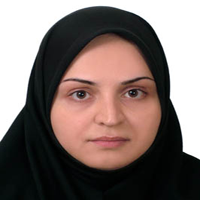Comparison of Phosphorus Removal Efficiency in Reed, Bamboo & Cyperus
Author(s):
Abstract:
One of the major water pollution factors in receiving water bodies is the presence of excessive nutrients (nitrogen & phosphorous compounds) due to wastewater discharge to the environment. If phosphorus level exceeds its discharge standard (6 mg/L), it will cause eutirification which resulted in secondary water pollution due to algal blooming crisis. Development of different methods to remove phosphorus from the year 1950 was performed in response to the need of reducing the discharged phosphorus amount to surface waters. Phosphorus is removed using different chemical and biological methods that have disadvantages such as greater capital and operational costs, operational problems, high sludge production and safety operational & maintenance requirement. So phyto-remediation method can be used to overcome these disadvantages. This useful technology is actually a genneric term for several ways in which plants can be used to clean up contaminated soils and water. Considering this fact phyto-remediation is a bioremediation process in which a particular type of plant used to remove, transfer, stabilize, degrade and volatilize of contaminants (such as pathogens, heavy metals, pesticides, solvents, crude oil, arsenic, cyanide and radioactive elements) by accumulation, stabilization, extraction, rhizofiltration, rhizodegradation or volatilization mechanisms. Phytoextraction is the name given to the process where plant roots uptake polltants from the soil and translocate them to their above soil tissues. Rhizofiltration is similar in concept to Phytoextraction but is concerned with the remediation of contaminated groundwater rather than the remediation of polluted soils. The contaminants are either adsorbed onto the root surface or are absorbed by the plant roots. Phytostabilisation is the use of certain plants to immobilise soil and water contaminants. Contaminant are absorbed and accumulated by roots, adsorbed onto the roots, or precipitated in the rhizosphere.Selection of appropriate plant and microbial species, biological accumulation and transmission of pollutants, contaminant concentration and its disposal are the most important factors in phyto-remediation process. Environmental factors including ambient temperature, solar radiation, the presence of nutrients, water and oxygen and the type of material removal will also affect the process. In this study reed, bamboo and umbrella plant were evaluated in removal phosphorus from water in different concentration of 2,10, 25, 50 and 100 ppm in vitro condition (ambient temperature of 23-25 ◦C, DO of 4.5 – 6.5 and pH of 6.5- 8.5). According to the results, the maximum phosphorous removal was observed in reed plant pilot at concentration of 25 ppm. The percent removal efficiencies were found to be 17.3, 35.81, 87.94, 78.77, 48.63, 52.4, 92.01 for reed, 15.66, 21.07, 68.08, 57.89, 34.41, 48.33 and 73.69 for bamboo and 15.89, 21.5, 37.23, 32.41, 22.33, 30.48 and 54.47 for umbrella plant at mentioned concentrations, respectively. Overall phosphorous removal for reed plant, bamboo and umbrella plant were 59, 45.5 and 30.65, respectiv.
Keywords:
Language:
Persian
Published:
Quranic Knowledge Research, Volume:15 Issue: 2, 2015
Pages:
89 to 96
magiran.com/p1471912
دانلود و مطالعه متن این مقاله با یکی از روشهای زیر امکان پذیر است:
اشتراک شخصی
با عضویت و پرداخت آنلاین حق اشتراک یکساله به مبلغ 1,390,000ريال میتوانید 70 عنوان مطلب دانلود کنید!
اشتراک سازمانی
به کتابخانه دانشگاه یا محل کار خود پیشنهاد کنید تا اشتراک سازمانی این پایگاه را برای دسترسی نامحدود همه کاربران به متن مطالب تهیه نمایند!
توجه!
- حق عضویت دریافتی صرف حمایت از نشریات عضو و نگهداری، تکمیل و توسعه مگیران میشود.
- پرداخت حق اشتراک و دانلود مقالات اجازه بازنشر آن در سایر رسانههای چاپی و دیجیتال را به کاربر نمیدهد.
In order to view content subscription is required
Personal subscription
Subscribe magiran.com for 70 € euros via PayPal and download 70 articles during a year.
Organization subscription
Please contact us to subscribe your university or library for unlimited access!


